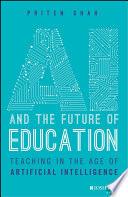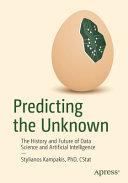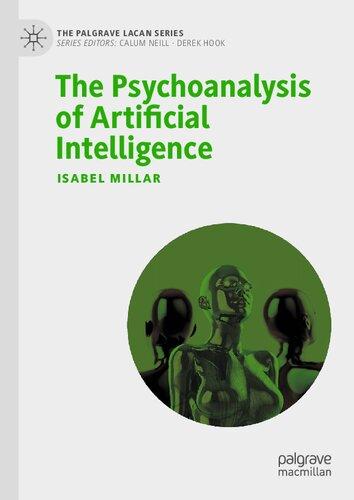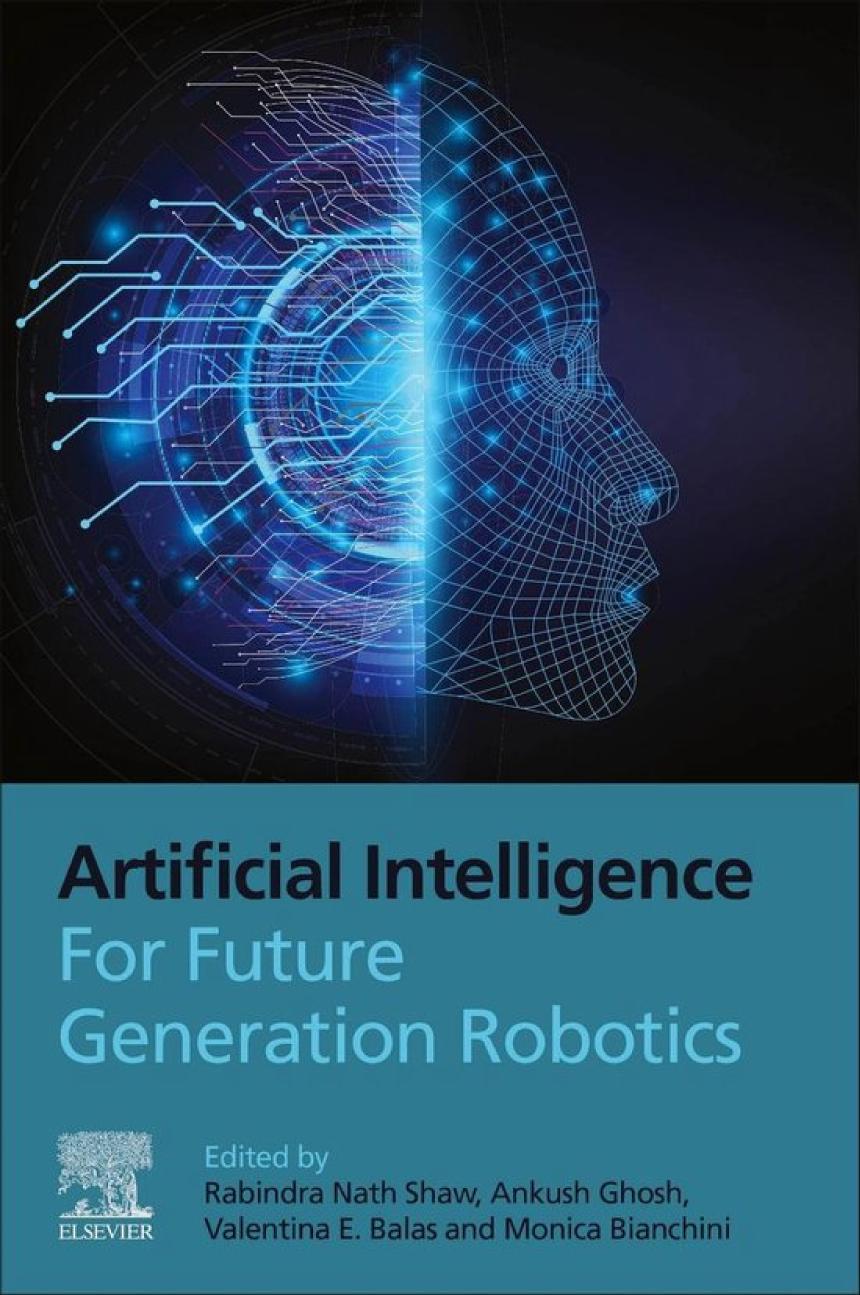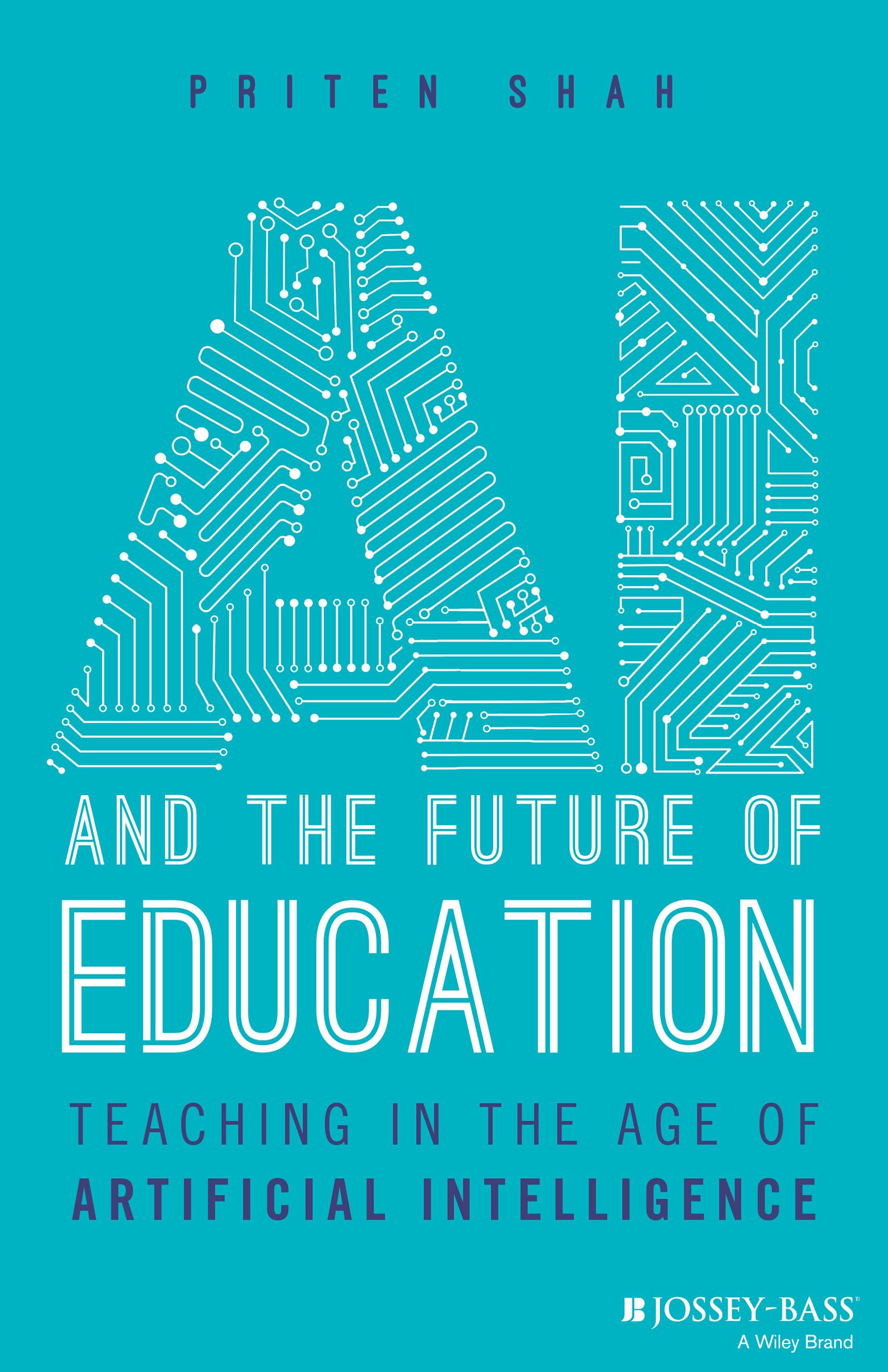AI AND THE FUTURE OF EDUCATION
Teaching in the Age of Artificial Intelligence
PRITEN SHAH
Copyright © 2023 by John Wiley & Sons. All rights reserved.
Published by John Wiley & Sons, Inc., Hoboken, New Jersey. Published simultaneously in Canada.
No part of this publication may be reproduced, stored in a retrieval system, or transmitted in any form or by any means, electronic, mechanical, photocopying, recording, scanning, or otherwise, except as permitted under Section 107 or 108 of the 1976 United States Copyright Act, without either the prior written permission of the Publisher, or authorization through payment of the appropriate per-copy fee to the Copyright Clearance Center, Inc., 222 Rosewood Drive, Danvers, MA 01923, (978) 750-8400, fax (978) 750-4470, or on the web at www.copyright.com. Requests to the Publisher for permission should be addressed to the Permissions Department, John Wiley & Sons, Inc., 111 River Street, Hoboken, NJ 07030, (201) 748-6011, fax (201) 748-6008, or online at http://www.wiley.com/go/permission.
Trademarks: Wiley and the Wiley logo are trademarks or registered trademarks of John Wiley & Sons, Inc. and/or its affiliates in the United States and other countries and may not be used without written permission. All other trademarks are the property of their respective owners. John Wiley & Sons, Inc. is not associated with any product or vendor mentioned in this book.
Limit of Liability/Disclaimer of Warranty: While the publisher and author have used their best efforts in preparing this book, they make no representations or warranties with respect to the accuracy or completeness of the contents of this book and specifically disclaim any implied warranties of merchantability or fitness for a particular purpose. No warranty may be created or extended by sales representatives or written sales materials. The advice and strategies contained herein may not be suitable for your situation. You should consult with a professional where appropriate. Further, readers should be aware that websites listed in this work may have changed or disappeared between when this work was written and when it is read. Neither the publisher nor authors shall be liable for any loss of profit or any other commercial damages, including but not limited to special, incidental, consequential, or other damages.
For general information on our other products and services or for technical support, please contact our Customer Care Department within the United States at (800) 7622974, outside the United States at (317) 572-3993 or fax (317) 572-4002.
Wiley also publishes its books in a variety of electronic formats. Some content that appears in print may not be available in electronic formats. For more information about Wiley products, visit our web site at www.wiley.com.
Library of Congress Cataloging-in-Publication Data is Available:
ISBN 9781394219247 (Paperback)
ISBN 9781394219261 (ePDF)
ISBN 9781394219254 (ePUB)
COVER DESIGN: PAUL
MCCARTHY
COVER ART: © SHUTTERSTOCK | BLUE HOUSE STUDIO
This book is meant to provide an introduction to educators who are interested in learning about both the current and future capabilities of artificial intelligence (AI) in education. It focuses primarily on generative artificial intelligence (popularized by ChatGPT, Google’s Bard, and Microsoft’s Bing Chat), and offers teachers concrete insight into how they can use these technologies now and how they will likely be able to use them in the near future.
AI is rapidly developing, and the book aims to be independent of a particular snapshot in time by offering relevant advice at multiple stages of AI development. It does not assume that AI will remain incapable of a particular skill set, and it sets the stage for the largescale changes that will be necessary in the coming years.
I highly encourage you to read all the prompt suggestions in every chapter, or at least skim through them, as the prompts (Chapter 2 explains this further) offer insight into effectively using these AI systems in your classroom. In that way, the book is meant to be a practical primer and does not focus on capabilities that teachers cannot yet use (e.g., sentiment analysis of facial expressions) and provides tips that are actionable immediately.
You will want to try at least some of the prompts from each section, and remember to add more context about the subject you’re
teaching, the age group, any standards or learning objectives you have, and what output you are seeking. I have limited the prompts in size to help you quickly see the possibilities, and Chapter 2 explains how to write the most effective prompts.
Both to acknowledge the rapid pace of development and to keep the length manageable, I have limited the focus on content specific to a particular model, tool, or platform. I hope to allow teachers to choose the platform that best suits their needs when they read the book. We provide many more tool guides, lesson plans, prompts, and examples on our website at pedagog.ai, and we encourage you to access those resources as you work through the book.
Of course, a logical question most readers will ask is: “Did AI write this book?” While AI did not write the book, it was used to help prepare it. The book was, however, ultimately written, edited, and put together by a team of real humans. Various AI tools, including some of our own implementations, such as OpenAI’s ChatGPT, Google’s Bard, and Microsoft’s Bing Chat, were consulted throughout the book as brainstorming buddies, thought partners, and a second pair of eyes on a funky-sounding paragraph. To help illustrate the role that AI can play in our workflow, the following lists the prompts used:
Prompt: “These are the guiding questions I’m considering discussing in a book section on the future of education and AI on {fill}. Are there any questions that seem unclear or irrelevant to this section?”
Prompt: “I’m trying to create an example for teachers on {fill}. This is what I have so far {fill}. What else could I add to provide a thorough picture?”
Prompt: “You are a prompt generator that helps me generate a prompt for teachers to use in generative AI tools so that they can do {fill}. What prompt would you use?”
Prompt: “This is a paragraph in a book on AI and the future of education. Provide me with suggestions for what you would change to ensure teachers can understand it properly: {fill}.”
AI tools were also used to help edit the manuscript, where particular suggestions were provided, and I modified my grammatical structure or word choice based on their insight. Grammarly’s AI-powered grammar and spell check system helped me rapidly review work and correct typos or errors.
As you read the book, you’ll notice that most sections include big-picture insights into what changes can and might look like and more accessible information on how to approach AI for various uses. I encourage you to focus on both so you can see where we are headed and are prepared to navigate teaching in the age of AI.
Embracing AI in Education
In response to the rapid development of artificial intelligence (AI), during the 2022–2023 school year, educators voiced concerns over plagiarism, cheating, and the futility of many of their traditional assignments. Suddenly, within minutes, students could generate essays that were hard to tell apart from human writing. Conventional plagiarism detection methods became obsolete as generative AI produced individual responses for each student. Some teachers scrambled to modify their assignments to keep up with the changes, while others were unaware of the newfound technological developments. While the issue of academic integrity was pertinent in the months following the advent of these new technologies, the longer-term conversation must involve embracing and making room for AI to ensure
our classrooms meet our students’ needs effectively. Educators must learn what AI is, how students are using and can use it, how it can make their lives easier, and how pedagogical goals that once seemed impossible can now be reached.
This book is a primer for educators to do just that. Throughout the chapters, I provide background information on the technological changes (both past, present, and likely future) and what that means for every teacher across the educational system. In addition, the book contains examples, tips and tricks, and thought-provoking questions to help prepare educators to teach in the age of AI.
Significant technological developments have always forced educators and the systems they work in to evolve to meet the educational needs of their students and take advantage of new opportunities. In that way, AI is similar to the challenges that educators have faced in the past. However, what makes these challenges different is the rapid pace at which they are developing, and the pain points and fractures within our educational models that they are exposing. These two factors make it essential that educators think about the implications of these developments on their practice and pedagogy quicker and more thoroughly than ever before.
To help educators do just that, Chapter 2 helps teachers develop a fundamental understanding of what AI is and how it is related to education, Chapter 3 highlights the fractures created by AI and identifies opportunities for large-scale change and adaptation in education, and Chapter 4 helps adapt traditional pedagogical theory to AI.
While plagiarism and academic integrity may have captured the initial public dialogue for education, I hope to present a more optimistic future for education. If these technologies are integrated and adapted to, instead of fought and avoided, educators and students will
be better equipped for the world that awaits us as AI revolutionizes our societies.
OPPORTUNITIES AND CHALLENGES: AI IN THE CLASSROOM
• What opportunities does AI present in the classroom?
• What challenges do educators face when implementing AI?
• What are the risks of overreliance on AI in the classroom?
While AI has intruded upon our classrooms, the opportunities it will create for our schools far outweigh the risks such technologies pose. The transition and adaptation will not be seamless, as we’ve already started to see, but with the proper knowledge and skills, educators can approach this new age ready to focus on what they do best: teach our students. Nonetheless, as with any rapid development, we must carefully consider how, when, and why we shift our practice and pedagogy in response to AI. While the entirety of this book is devoted to helping teachers carefully navigate this transition, the following sections provide an overview of the opportunities and challenges that AI is bringing.
The Opportunities
In the wake of the COVID-19 pandemic, teacher burnout and attrition were at all-time highs. This was not surprising given the growing blend of challenges teachers face. They are suffering from the pedagogical challenges of students who are academically behind, disengaged with the classroom, and presenting with various developmental, cognitive, and socioemotional needs. In addition, they
are burdened by the practical challenges of keeping up with parent and administrative communication, implementing multiple systems and protocols, and ensuring they generate standards-aligned material. These have combined to push teachers to the breaking point and caused a nationwide teacher shortage. While AI cannot fill in the gaps created in the classroom by our departing colleagues, it can help solve and mitigate many of these challenges and make teaching a less daunting experience for current and future teachers.
Teachers spend countless hours outside their instructional time planning lessons and activities, preparing instructional materials, providing assessment feedback, and managing administrative tasks. These tasks are independent of teachers’ face-to-face time with students, and involve generating and responding to content for various non-instructional purposes. The development of generative AI technology thus offers a path to offloading much of the workload that happens behind the scenes of instructional time. AI can help outline curriculum, draft lesson plans, generate assessments, and draft communication and feedback for teachers. The more teachers can rely on AI for this portion of their workload, the more time and energy they will have to focus on providing students with direct instruction. Chapters 5 and 6 provide suggestions for educators on how to best use AI tools to make their own time more effective and valuable.
AI can also solve many of our pedagogical problems by providing us with custom, individualized, technology-based solutions to the issues we are facing. Creating personalized, interactive, and dynamic learning opportunities is becoming easier and more accessible for a broader range of educators to meet our students where they are and help keep them engaged in the learning process. Recent developments in AI technology will allow teachers to tailor their instruction and assignments to individual students, creating a more equitable and effective teaching strategy. In addition, AI systems will be able to
help teachers analyze student data, and pinpoint learning difficulties and gaps quicker to provide targeted support for struggling students. Chapter 7 details how educators can use AI to boost student differentiation and engagement through various strategies and tools.
Many of these opportunities are already present with the technologies as they stand now, and in the upcoming years, these will only further develop and present more ways for teachers to shift how they spend their time.
The Challenges
As educators begin to take advantage of these opportunities, it will remain essential to engage critically about how much we come to rely on these technologies. There are significant ethical and practical challenges that such drastic changes in our workflow and pedagogical tools will bring, and both students and teachers need to be able to think and act critically.
As students prepare to enter a world where AI is ubiquitous, whether in future educational stages, their careers, or their social lives, they will need to be able to analyze the ethical and social implications of various AI technologies. They will have to be able to navigate how and when to use the assistance of AI and define what integrity means for them and their peers. As democratic participation and dialogue change, students must be able to navigate misinformation, deepfake media, and tailored manipulation and propaganda. They will also need to think through what they produce and put out into the world and its consequences for the rest of society. Finally, they will have to critically evaluate the output of AI to spot and address biases and inaccuracies. Chapter 8 provides guidance on critical skills and dispositions students will need to develop in school to successfully navigate these challenges later in life.
Educators, too, will need to act carefully to ensure that introducing AI doesn’t worsen existing problems in education. While AI has the potential to help us narrow the achievement gap, we need to ensure that our responses take advantage of it to do so rather than risk widening it. To do so, we will also need to make progress on closing the digital divide to ensure that AI’s benefits are equitable. Finally, as more data and information is shared with AI companies and providers, educators need to be able to think through data privacy and security to ensure that students are not exploited for profit gains. Some initial thinking and background on these issues are covered in Chapter 9.
Given the nature of technological developments and AI specifically, teachers will need to focus on self-evaluating their skills and knowledge to navigate these challenges. While teachers do not have to become technical experts in machine learning, there are core skills and knowledge that will help them navigate the age of AI. They will also have to constantly remain in tune with new developments and progress and seek resources that help build on their practice. In fact, teachers can turn to AI itself for their own professional and personal development. All of these suggestions are built upon in Chapter 10.
Risks
One of the fears echoing from most industries is about the future of the workforce in the age of AI. Educators, however, will remain crucial players in helping prepare students for the future world. At the same time, the drastic increase in reliance on technology brings risks that we must balance.
While I have outlined how AI can enhance instruction, educators must balance technology and face-to-face interactions to maintain the essential human element in education. These interactions are critical for fostering empathy, social skills, and emotional intelligence. We
must continue to advocate for the importance of educators as human facilitators of knowledge and skill acquisition. Most of the book is devoted to helping teachers adapt to this role.
Educators must also be careful because an excessive focus on AI in the classroom may lead to an unhealthy dependence on technology, diminishing students’ ability to think critically and solve problems without digital assistance. While just like the calculator and even the smartphone have changed what kinds of skills students need in order to function effectively in the world, higher-level skills are built on lower-level ones, and moving too quickly away from them can risk students who are unable to work independently. The strategies outlined in this book are designed to ensure that students continue to learn the fundamental skills necessary for the rest of their lives while still developing fluency with the tools and systems they will encounter throughout their lives.
These risks are not so great that we should avoid or fear the introduction of AI, but they are significant enough that they warrant thoughtful implementation and integration strategies. The following section offers a framework for thinking about how we integrate AI into our educational systems.
SUSTAINABLE AI INTEGRATION STRATEGIES
• What are the key components of successful AI integration?
• What are implementation strategies that will work long term?
• What are bridges to future implementation strategies?
It is not an easy task to integrate AI into our educational systems. While individual teachers and students across the country are already exploring ways to connect AI with their pedagogical and educational goals, a sustainable strategy will be necessary in order to avoid kneejerk reactions that either risk exposing students to technology that isn’t
ready for the classroom or leave them far behind their peers. While many of these strategies will be at the district and state level, teachers will likely have to adapt faster than these institutions work and play a crucial role in helping policymakers craft the right strategies.
Before starting to think about integrating AI into your classroom, it will be helpful to outline the goals, timelines, and purpose of doing so. This will create a vision from which you can choose how to evaluate tools, help you make curricular decisions, and guide your conversations with other stakeholders. Here are some questions you can ask yourself:
• What are my overall educational objectives for incorporating AI in the classroom?
• What problems am I trying to solve?
• What standards am I trying to meet?
• What do I want my students to gain from the integration?
• What are important events around which I can plan my integration?
• Are there semesters or quarters I can divide my plan into?
• Are there particular units or chapters where I have more leeway to try new things?
• How much time will I need to introduce the concepts or tools to my students?
• What am I trying to solve with AI integration?
• Am I integrating so my students don’t fall behind?
• Am I integrating to better meet my already established pedagogical goals?
• Am I integrating to make my life easier and allow me to focus on teaching?
• Are there real-world skills I want to ensure my students gain from this experience?
Once you have your big-picture view, consider what outside support or involvement you’ll need to make these goals a reality. Here are some questions to think about which stakeholders need to be involved and what role they have to play:
• What administrators’ buy-in do you need? Are there district policies to navigate or change?
• What other teachers should you involve? Are they interdisciplinary connections you can make across departments?
• What is the sentiment from your students? Are they asking questions or already using AI?
• How involved is your parent population? What will their perception be?
• What level of training and support will you need from your district, and what will you be able to seek yourself?
Once you know what role others will play in your integration, it is time to consider the practical considerations of how you will go about your plan. You need to think through the details about tools, data, and implementation. Here are some questions to guide that:
• What specific tasks or responsibilities would I like to offload to AI?
• Which tools can help me do those tasks closest in quality to how I would?
• What aspects of my students’ learning journey can AI tools support or improve?
• Which tools are built specifically for that?
• Are there tools that will work across units and for multiple different uses that will save onboarding time?
• How can I ensure that AI tools and technologies are ethically and responsibly used in my classroom?
• What guidelines or policies should be in place to help my students navigate the new technology?
• What feedback and data will I rely on to see if my integration works?
• Are there student or parent surveys I need to prepare?
• Are there pre- and post-exams, or cross-unit analyses I can do?
• What data and privacy questions do I need to ask?
• What data is used by the AI company, and how?
• What student privacy standards does the company have?
• What policies do they follow, and which ones do my district or school require technology companies to follow?
• Where and when will my students access these tools?
• Can I ensure access is equitable for all my students?
• Do the tools have the accessibility features that my students need?
By reflecting on these questions, you can create a clear vision and plan for incorporating AI into your classroom. As you begin to implement AI tools and strategies, be prepared to adapt and refine your approach based on feedback, student outcomes, and new insights from the field of AI in education. You’ll have to remember that integrating AI into the classroom is an ongoing process, and your answers to some of these questions might change as you gain experience and the technology continues to develop.
As you work through this book, you will gain insight and knowledge to help you answer these questions, so use them as a starting point for planning your integration strategy.
When answering these questions, consider how your investment in acquiring this knowledge can be helpful long term. AI is not a shortterm fad; your investments now should help you prepare for future developments. No one is certain where AI technology is headed in the next few years, so teachers have to ensure that as they embrace these changes, they are preparing themselves for lifelong learning, both for themselves and their students.
Standards, institutional assessments, expectations, and the workforce will drastically differ within your career span. Therefore, your short-term goal will be to create fluency for yourself and your students with these changes such that you can quickly adapt and implement any changes that policymakers make.
Overcoming Barriers to AI Adoption
• What resistance will educators and policymakers have to AIdriven change in education?
• What resistance will parents and students have to AI-driven change in education?
• How can educators overcome resistance to AI adoption, and promote understanding and acceptance of generative AI technology in the classroom?
After you have crafted your strategy and goals, you will have to consider external pressures against your implementation. We already see a negative backlash to AI in some schools, with many major districts implementing bans and policies against AI. Educators and the general public are vocalizing a lot more concerns about AI. If the
integration of AI technology is to be successful, it is crucial to address the various concerns these stakeholders may have.
While bans on AI in education may provide a short-term solution, they are not a long-term strategy for addressing the challenges of the rapidly evolving educational landscape. As AI technologies continue to advance and become more prevalent, educators will need to be prepared to show examples of successful AI integration in education and preemptively answer questions and concerns from stakeholders.
Thus, to effectively implement AI in their classrooms, it will be necessary for educators to be proactive in addressing concerns and promoting understanding and acceptance of AI technology. By sharing success stories and answering questions from stakeholders, educators can help build support for AI integration in education and ensure that students are well-prepared for the rapidly evolving technological landscape.
Educators and policymakers may resist AI-driven change due to fears of job security or insufficient training and support. Limited budgets and competing priorities may also make investing in AI technology and related professional development challenging for schools and districts.
Resistance to change may also stem from ingrained habits, routines, and traditionalism. Privacy and ethical concerns about data security and bias may also lead to skepticism and hesitation toward AI integration. Additionally, parents and students may have concerns about the potential dehumanization of the classroom, the effectiveness of AI-driven learning experiences compared to traditional teaching methods, and the possible exacerbation of existing educational inequalities.
Educators will have to have the knowledge and experience to communicate against this resistance. Clear communication with stakeholders about the goals, benefits, and potential challenges
of AI integration can help build trust and understanding. Involving stakeholders in the decision-making process can also create a sense of ownership and support for AI-driven changes in education. Ongoing education and sharing success stories of AI integration in education can foster greater acceptance and dispel misconceptions. Addressing privacy, ethical, and accessibility concerns proactively can help alleviate fears and build confidence in the use of AI in the classroom.
Ultimately, it’s important to emphasize the human element of education and highlight the ways in which AI can enhance, rather than replace, the role of educators. By taking these steps, educators can overcome resistance to AI adoption and promote understanding and acceptance of AI technology in the classroom.
CONCLUSION
In conclusion, integrating AI into education presents significant opportunities and challenges. As we have explored throughout this chapter, AI has the potential to revolutionize teaching and learning by streamlining administrative tasks, enabling personalized learning experiences, and fostering the development of critical skills necessary for success in an increasingly digital world. However, to fully harness these benefits, educators must proactively address concerns and resistance from various stakeholders, including policymakers, parents, and students.
To navigate this rapidly evolving landscape, educators are encouraged to develop a clear vision and strategy for AI integration, engage in ongoing professional development, and remain adaptable to new technologies and approaches. In addition, by fostering open communication, involving stakeholders in the decision-making process, and addressing concerns about privacy, ethics, and accessibility, educators
can facilitate the adoption of AI in the classroom and create a more equitable and effective learning environment for their students.
As we move forward, it is essential for educators to stay informed about the latest developments in AI and education and to actively participate in the conversation around its integration. By doing so, they can ensure that they are well-prepared to adapt their teaching practices and pedagogy in response to emerging technologies, ultimately empowering their students to thrive in the ever-evolving world of AI.
Exit Ticket
Start drafting your responses to the questions in the strategies section, and see if you can prepare a letter to your principal asking them to allow you to use specific AI tools in your classroom. Don’t worry if you don’t have all the necessary information. This is just to get the juices flowing!
